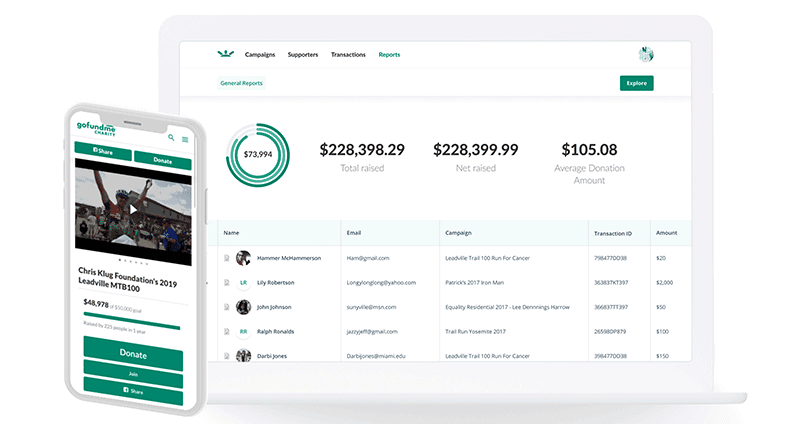Online Fundraising: Proven Tactics to Increase More Funds for Your Nonprofit
Online Fundraising: Proven Tactics to Increase More Funds for Your Nonprofit
Blog Article
The Function of Area Interaction in Nonprofit Fundraising: Building Lasting Relationships for Lasting Support
Neighborhood engagement is significantly identified as a critical component of successful not-for-profit fundraising. The approaches and approaches employed to involve communities vary widely, raising essential concerns regarding performance and influence.
Comprehending Area Involvement
Neighborhood engagement is a vital component of successful nonprofit fundraising efforts. It describes the methods and activities that companies employ to get in touch with their neighborhood communities, fostering relationships that are mutually helpful. Comprehending community interaction includes acknowledging its diverse nature, which consists of outreach, engagement, and collaboration. Nonprofits should recognize crucial stakeholders-- such as community participants, local businesses, and various other organizations-- to develop reliable involvement methods.
Efficient community involvement is predicated on energetic listening and responsiveness to the needs and rate of interests of the area. This process entails getting comments, comprehending community dynamics, and ensuring that the company's objective aligns with regional top priorities. Involving the neighborhood can take different kinds, including public meetings, volunteer chances, and partnership efforts, each designed to urge involvement and investment in the company's objectives.
Furthermore, neighborhood interaction should be approached as a recurring dialogue instead of an one-time initiative. By promoting an inclusive environment where neighborhood voices are heard and valued, nonprofits can construct a solid foundation for future fundraising undertakings. Inevitably, a deep understanding of neighborhood involvement equips companies to produce genuine links that boost their total effectiveness and sustainability.
Advantages of Strong Relationships
Strong partnerships created through community involvement yield countless advantages for not-for-profit fundraising initiatives. Firstly, these relationships foster trust and credibility, important components in motivating donors to add. When prospective advocates see a not-for-profit actively associated with their neighborhood, they are most likely to count on its goal and impact.

In addition, these partnerships facilitate effective interaction. Nonprofits can leverage their connections to share tales of effect, updates, and requires, guaranteeing that supporters remain informed and engaged. This open line of interaction not just enhances bonds but also urges referral promo, broadening the not-for-profit's reach.
Lastly, solid area connections can attract brand-new companions and sponsors. Services and people are much more inclined to straighten with companies that show purposeful area participation, giving additional resources and assistance that can substantially enhance fundraising abilities. Thus, growing robust relationships through community interaction is essential to a nonprofit's long-term fundraising success.
Methods for Efficient Engagement
Exactly how can nonprofits properly engage their communities to enhance fundraising initiatives? Creating targeted approaches is crucial for fostering meaningful links. Initially, leveraging social media sites systems allows companies to share their goal dynamically and interactively, getting to a more comprehensive target market. Regular updates, engaging material, and calls-to-action can galvanize neighborhood interest and engagement.
2nd, holding area events, such as workshops, volunteer opportunities, or fundraising drives, facilitates face-to-face interaction, permitting nonprofits to showcase their effect and efforts. These occasions not just increase funds yet additionally cultivate connections and permit community participants to engage directly with the reason.
Third, applying individualized interaction strategies can improve engagement. Customizing messages to particular donor sectors based upon rate of interests and previous payments fosters a sense of belonging and investment in the company's objective.
Lastly, creating partnerships with local organizations and community leaders can amplify outreach efforts. Collective initiatives can improve exposure and integrity, showing a cumulative dedication to the neighborhood's well-being. By integrating these approaches, nonprofits can build enduring partnerships that enhance fundraising initiatives and drive sustainable assistance.
Measuring Involvement Success
While involving Click This Link the neighborhood is critical for effective more information not-for-profit fundraising, gauging the performance of these involvement efforts is equally crucial. Establishing clear metrics allows companies to examine exactly how well they are connecting with their audience and achieving their fundraising goals. Secret efficiency signs (KPIs) such as donor retention prices, volunteer engagement degrees, and engagement on social networks systems give tangible information for evaluation.

On a regular basis assessing these metrics allows companies to pivot their methods when needed, making certain that area engagement stays lined up with their overall mission. Furthermore, sharing these results with stakeholders promotes openness and builds count on, urging more neighborhood involvement. Eventually, a durable dimension structure not just educates future fundraising efforts however likewise enhances the connection between the not-for-profit and its supporters, laying the foundation for sustainable success.
Study in Area Influence
Various situation studies illustrate the extensive impact that area interaction can carry not-for-profit fundraising success. One remarkable instance is the "Food for Idea" campaign, where a neighborhood food bank partnered with colleges and businesses to host community dinners. These occasions not only raised funds but likewise fostered a feeling of belonging among participants, considerably increasing contributor retention rates.
Another compelling instance is the "Environment-friendly Spaces Job," which entailed regional homeowners in the revitalization of metropolitan parks. This campaign not just gathered financial backing from neighborhood companies but additionally grew a volunteer base that added to recurring maintenance and programming. The sense of possession and satisfaction amongst community participants equated right into continual payments.
In the realm of arts, the "Art for All" project efficiently engaged neighborhood artists and clients to develop collaborative art installments, leading to increased exposure and contributions for a neighborhood arts not-for-profit.
These instances highlight that when nonprofits prioritize area involvement, they can produce long-term partnerships that improve fundraising efforts, ensuring lasting assistance visit this page and cultivating a vibrant community culture. Such cases demonstrate that neighborhood engagement is not merely a technique but a necessary pillar of nonprofit success.
Conclusion
In final thought, area interaction is indispensable to the success of nonprofit fundraising initiatives. Inevitably, a robust structure of area support not only magnifies fundraising prospective however additionally grows a society of collaboration, necessary for attaining long-lasting business goals and sustaining significant influence. fundraising consultant.
Nonprofits need to determine vital stakeholders-- such as area members, local companies, and various other organizations-- to develop reliable interaction approaches.

In verdict, community involvement is important to the success of nonprofit fundraising efforts.
Report this page